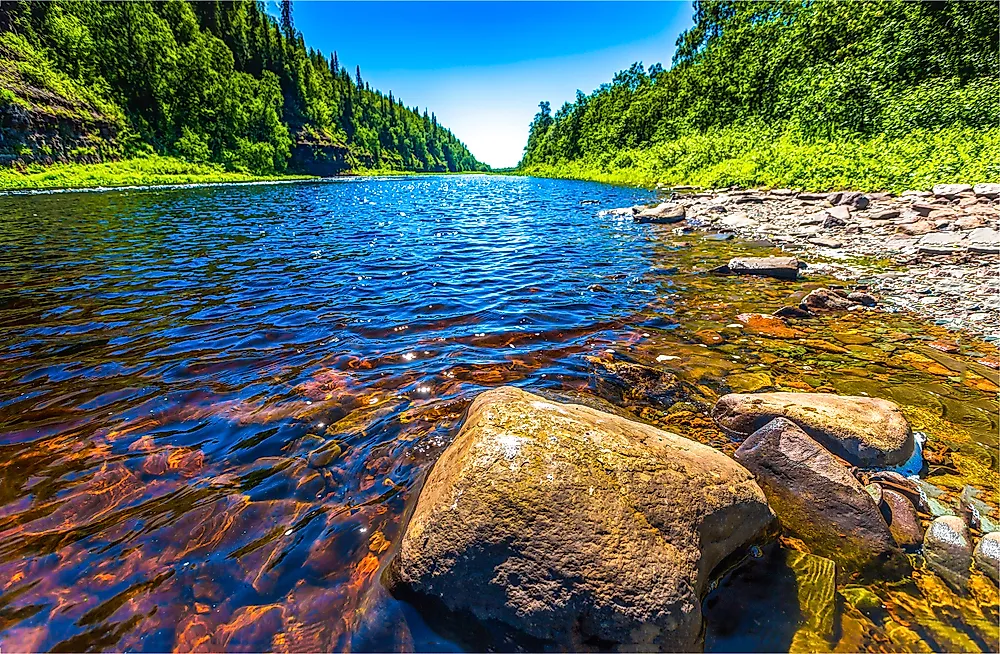Why Does the Width of a River Increase As it Flows Downstream?

The course of a river begins in relatively high areas, with a very narrow width depending on the source. However, different processes occur in different stages downstream. There are three distinct stages: the upper, middle, and lower course. The upper course, commonly known as the source, has a small width, is shallow, and has few small tributaries. In the middle phase, the river morphology changes in width and depth. As the river gathers momentum downstream towards the lower course phase, the width reaches its widest point. The following factors contribute to the widening of a river downstream.
Volume of Water
The volume of water increases downstream due to increasing inlets from tributaries and rainwater. The flow downstream is characteristically turbulent, chaotic, and erratic. The larger discharge requires a bigger space due to the added volume of water. To contain the water, the river enlarges along the banks, leading to an enlarged width.
Velocity
As a river flows downstream, its velocity increases. The speed increases due to the fact that more water is added from tributaries along the course of the river. Additionally, less water is in contact with the river bed, which results in less energy needed overcome friction. The larger mass of water causes wider and deeper water channels in order to allow water in the river to flow more freely.
Gradient
The slope of a river decreases as it flows progressively downstream. Gravitational force is stronger uphill, but gentle in the lower course. The water tends to flow slowly due to higher water friction, hence the width increases. Towards the mouth, the gradient is lower, enabling water to flow on a wide surface area.
Erosion
River water carries millions of tonnes of sediments. The sediments are both suspended load and bed loads. Suspended water load is more relaxed as the gradient and velocity decreases. The bed load, which moves downward by a process of saltation, collides with each other less as the turbulence decreases. Therefore, the water occupies more horizontal space to accommodate the sediments, thus making it wider.
Change in Landscape
The land surface is flatter as a river approaches the mouth. Most rivers will empty into lakes, oceans, or swamps which have a flat terrain. Therefore, a river tends to gain more space horizontally, resulting in a greater width. A river constantly interacts with the physical environment, and therefore can overflow downstream, which results in flooding.
Human Activities
Human settlement and intensive land use are more common in lowland areas. Human activities lead to more bare land. For example, deforestation and urbanization lead to the excavation of sand and stones for building along riverbeds. These types of land reform ultimately result in the widening of a river.
Climate
Water upstream may be composed of snow and ice. However, downstream the climate may change and become gradually warmer, causing snow and ice to melt. This melting increases the flow of a river, which increases its width.
Channel Patterns
Near the source, general river geomorphology is categorized as a straight channel. However, downstream the water flow meanders due to the erosion of outer parts of bends in the river. The river becomes wider as the meandering channel is eroded and washes away more materials along the riverbank. The cross-sectional area of the river, therefore, becomes larger.











